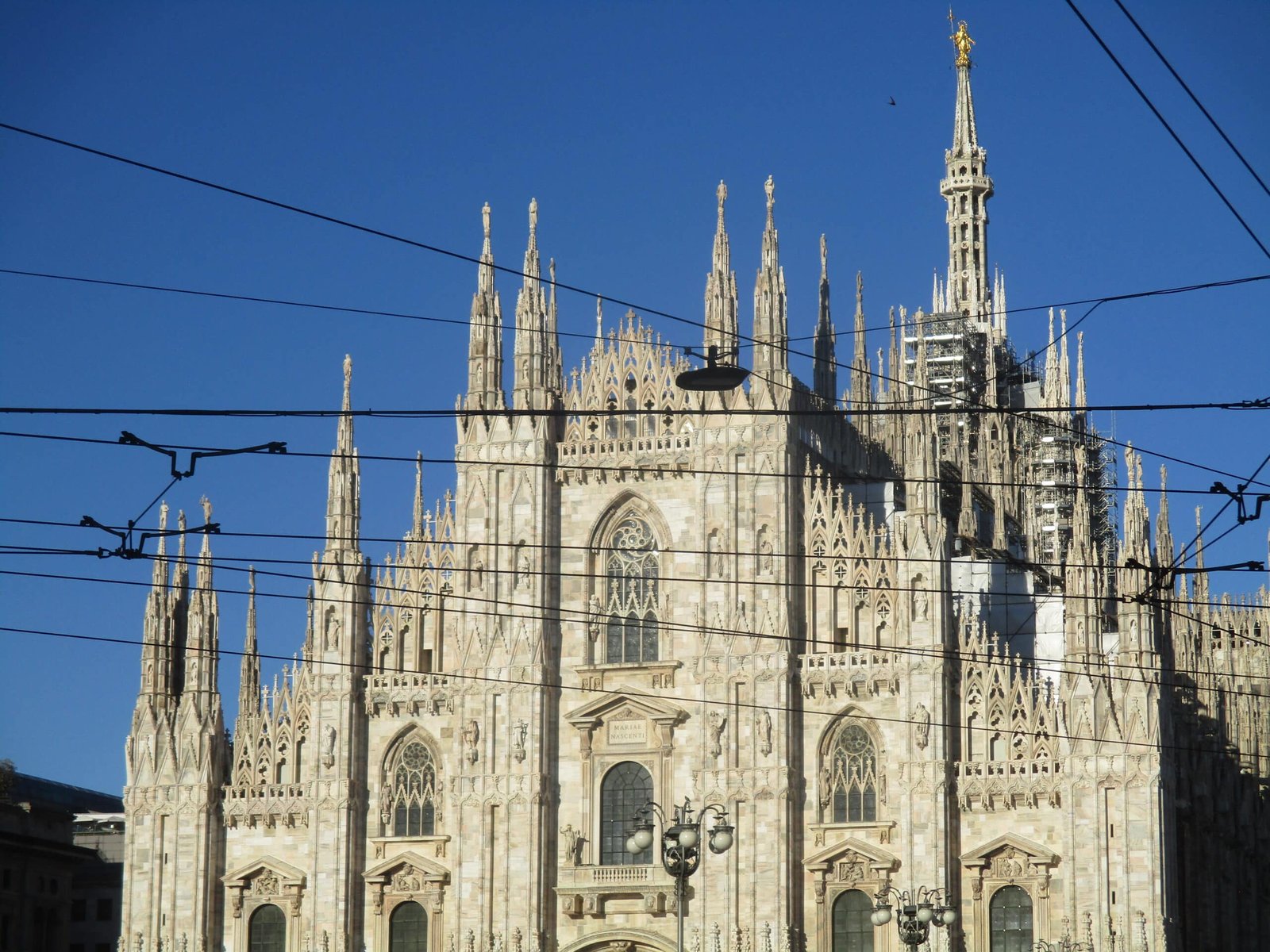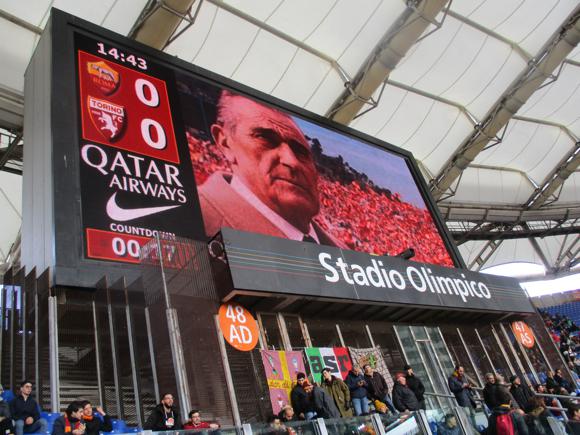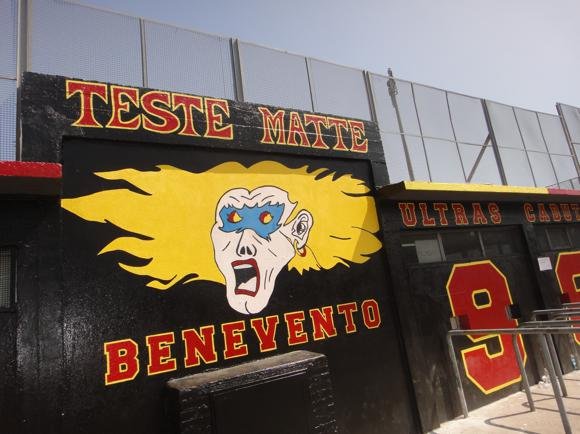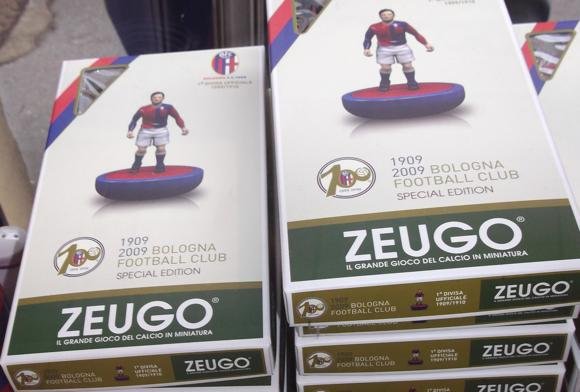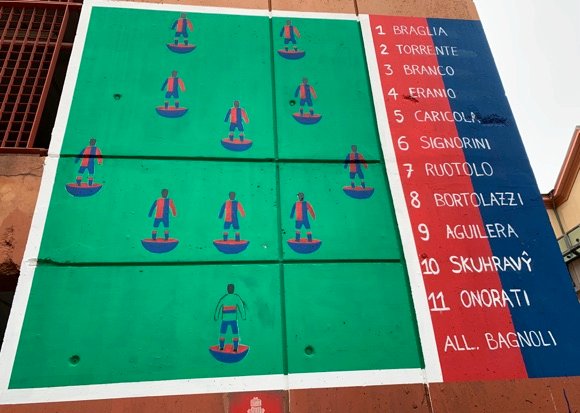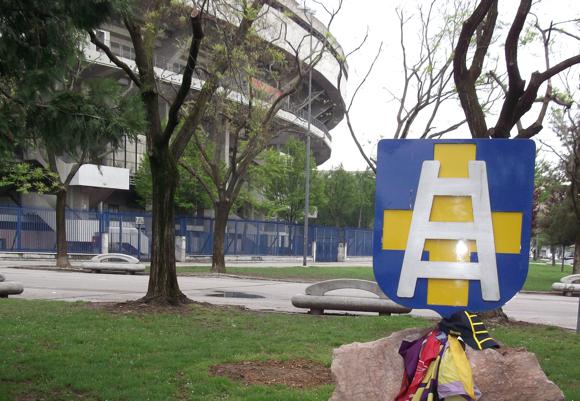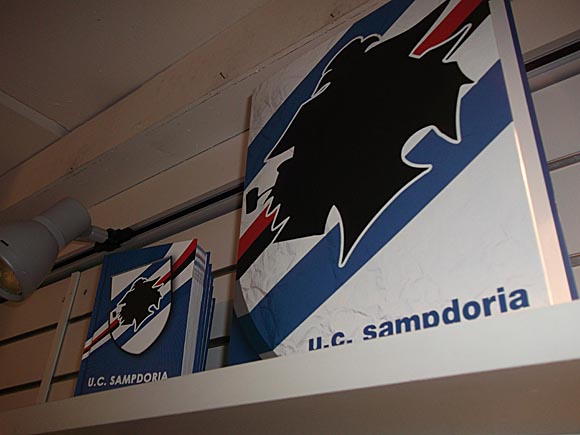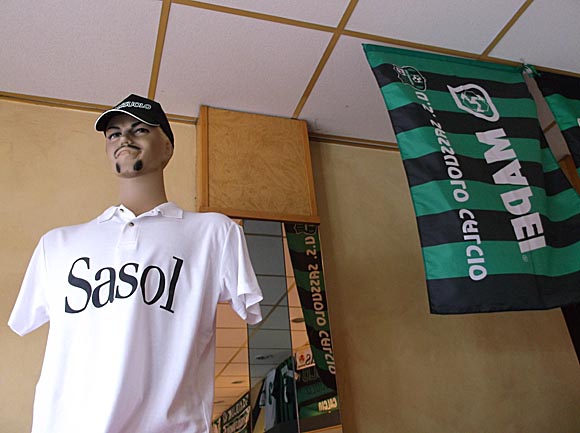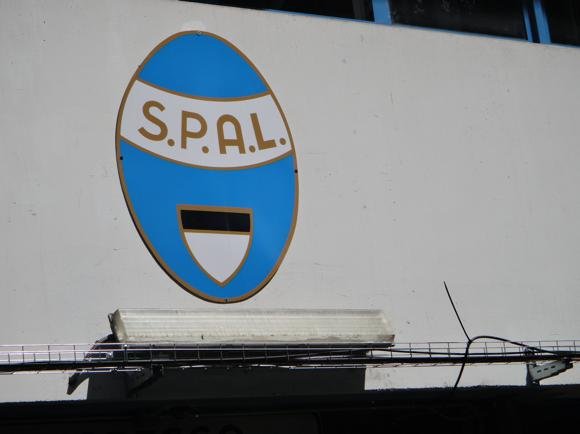A fan’s guide – the club from early doors to today
Winning the Scudetto in 2021 for the first time in over a decade, Internazionale then followed up with a 20th title three seasons later, allowing a second star to be sewn onto their storied black-and-blue shirts. At the same time, US global asset managers Oaktree Capital took over the club from Chinese owners Suning Holdings, unable to meet the near €400 million debt repayment mainly incurred during the pandemic.
Filling most of the vast San Siro stadium they groundshare with eternal rivals AC Milan, the Nerazzurri depend on match-day revenue for much of their income – with Suning having to shore up major losses elsewhere, finances dictated that 2021 title-winning coach Antonio Conte and leading goalscorer Romelu Lukaku were soon headed for London.
After Inter – as they are referred to, only as Inter Milan outside Italy – readjusted to the Champions League after being seven years away from Europe’s elite, they made it through to the final in 2023. A routine win over AC Milan in the semi-final led to a showdown in Istanbul with Manchester City. Giving the oil-rich Mancunians a closer run for their money than most expected, Inter were let down by profligacy in front of goal, ironically returning hero Romelu Lukaku the main culprit.
Still, the Inter are back where they belong, topping Serie A and in the last eight of the Champions League, as of spring 2025.

Formed in 1908 by a breakaway group of disgruntled members of Milan Cricket & Football Club, Internazionale are only club to have spent their entire history in Serie A, winning it 19 times.
The Nerazzurri have enjoyed several periods of dominance, most notably the Grande Inter side of the mid 1960s and the five-time title winners between 2006 and 2010. Each of these sides, under Helenio Herrera and José Mourinho, won the European Cup/Champions League.
After title wins in 1910 and 1920, Inter’s Italian roots saw them favoured by the pre-war Fascist authorities, who changed their name to Ambrosiana-Inter. With charismatic Giuseppe Meazza scoring the goals, the Nerazzurri won three titles.







Groundsharing the San Siro with AC after the war, and backed by oil millionaire Angelo Moratti, La Grande Inter matched Milan for silverware. With mercurial manager Helenio Herrera installing a strict catenaccio system and midfield icon Sandro Mazzola pulling the strings, Inter won consecutive European Cups in the mid-1960s but gained a grim reputation for influencing referees behind the scenes.
Attacking defender Giacinto Facchetti enjoyed a life-long career at Inter, two decades as a player and later as club president.
Inter next enjoyed success with German World-Cup winning duo Lothar Matthäus and Andreas Brehme, Jürgen Klinsmann joining the year after the 1989 title win. Despite serious investment from Angelo Moratti’s son Massimo, and the arrival of stars such as Ronaldo and Christian Vieri, Inter spent the next 15 years just off the pace at home, although picking up three UEFA Cups.
The club’s lack of involvement in the Calciopoli fixing scandal of 2006 saw the Serie A title revert to them by default. A year later they won it outright – although with Juventus demoted to Serie B.




A third win in 2008 was the last under Roberto Mancini. Incoming coach José Mourinho achieved a Scudetto in his first season then, remarkably, won a historic treble in 2010. It took two goals from Diego Milito, the attacking midfield prowess of Wesley Sneijder and the solidity of Maicon and Walter Samuel at the back for Inter to beat Bayern Munich 2-0 in that year’s Champions League final. Stalwart captain Javier Zanetti was playing his 700th game for the club – his retirement at the end of 2013-14 saw him move upstairs to vice-president.
Sugar daddy Massimo Moratti had already bowed out, Inter eventually taken over by Chinese-run Suning Holdings in 2016. The last of the old-school football dynasties made way for the whims of foreign ownership. With Juventus resurgent, and Inter unable to dip into Moratti’s money, the Nerazzurri trod water for several seasons. Managers of the quality of Claudio Ranieri and Roberto Mancini failed to break the Juve monopoly.
Under Luciano Spalletti, with Mauro Icardi the kind of figurehead captain who could score a hat-trick in the Milan derby, Inter slowly began to bring back 60,000 crowds, eager to see a top-four Serie A finish. A late Icardi penalty led to a wild finish at Lazio, Inter’s 3-2 win closing the 2017-18 campaign with a first Champions League qualification for six seasons.



The fourth-placed finish in 2018-19 was accompanied by a dissatisfying return to Europe and the eventual departure of want-away Icardi. In his place came Romelu Lukaku for a club record fee and, replacing the outgoing Spalletti as coach, Antonio Conte. Behind the scenes, Inter chairman Steven Zhang and his company Suning piled money into the club. The wage bill mounted.
Later that season came Christian Eriksen from Tottenham and Ashley Young from Manchester United, both experienced internationals, but the real revelation was Argentine forward Lautaro Martínez, thriving without his compatriot Icardi around and striking up an effective understanding with Lukaku. The ‘Lu-La’ duo accounted for 55 goals in all competitions that season, a massive 34 coming from the Belgian, equalling Ronaldo’s record in 1997-98.
The last Lukaku scored was the least wanted, an own goal to tip a see-saw Europa League final Sevilla’s way. On the plus side, this was Inter’s first European final for a decade, while at home, Conte’s men had pushed Juventus very close for the title.
All came together in 2020-21. As Nicolò Barella emerged as a young midfielder of real class – his season culminating in a Euro 2020 winner’s medal for Italy – Inter continued where they left off, a 2-0 win over Juventus in January prefacing a long run of consecutive victories. The Lu-La pairing simply swatted Milan aside in February and the title was pretty much assured by Easter.
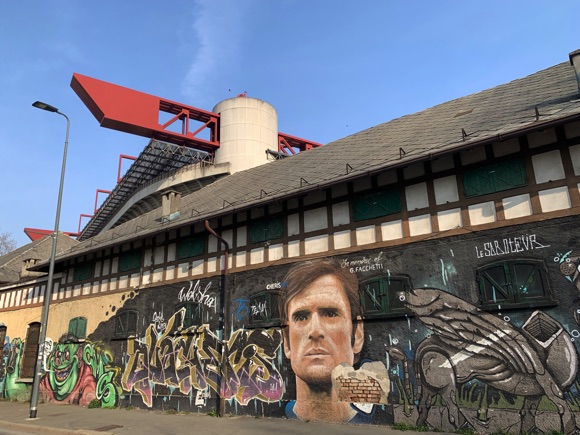


It wasn’t all Lu-La, though – Conte’s tight back line and defensive midfield meant only three defeats all season. The detail-obsessed coach was acutely aware that majority owners Suning had been plugged gaps in its global operations as the economic effects of the pandemic hit home. He and Lukaku headed for London, leaving Simone Inzaghi to inherit the core of Conte’s side, plus old trouper Edin Džeko and without Eriksen, recovering from his near-death experience at Euro 2020.
Inzaghi’s Inter put up a creditable title defence, with only one league defeat going into the crucial derby with Scudetto challengers Milan in February. All was going well until another old trouper, Olivier Giroud slotted away a brace in three minutes to veer the title race away from the holders. In Europe, Inter may have pushed Liverpool closer in the first knock-out round of the Champions League but for a foolish red-card offence by Alexis Sánchez.
The return of Lukaku in 2022 revived the Lu-La forward partnership, decisive in a surprise run to the final of the Champions League, swatting aside AC Milan in the semi, but lacking in front of goal against a vulnerable Manchester City in Istanbul. Without his Belgian counterpart in 2023-24, Martínez then turbocharged Inter’s campaign with 24 league goals, an unbeaten run from September leading to a derby win over Milan in late April.
Never had Inter won a Scudetto in such sweet circumstances – and a 20th one at that. A title repeat in 2024-25 looked a safe bet for much of the season, even after a surprise defeat at the hands of Milan that September.





Stadium Guide
The field of dreams – and the stands around it





After playing at several grounds around town including the historic Arena Civica, Inter moved into Milan’s San Siro in 1947. In a city where football loyalty is not dictated by geography, and at a stadium whose capacity came close to six figures on the eve of the European era in 1954, the groundshare arrangement underpinned the most intense derby in the Italian game. Almost every season, each club honed in on the title, the nearest challengers invariably the city rivals.
Unlike in Rome, where a running track separates the pitch from the stands, the San Siro is intimate, fans up close to the action. Floodlit European nights were electric. From September 1963, and a narrow victory over Everton, to a routine win by visitors Lyon nearly 40 years later, Inter never lost a home leg in Europe’s premier club trophy.
By then, the San Siro had undergone a complete transformation for Italia ’90 fans. Cylindrical towers and an open, plexiglass roof replaced the candystriped sardine can of 1960s lore. Capacity was set at 80,000, now slightly reduced to just under 76,000. Inter fans occupy the Curva Nord, a tradition that will surely be kept after the San Siro is knocked down in 2026 to make way for La Cattedrale slated to be built on the same site.
Note that the official name of the ground is the Stadio Giuseppe Meazza, after the great Inter star and later manager who also briefly played for Milan.
For stadium transport and bar details, see San Siro.
getting in
Buying tickets – when, where, how and how much

Tickets and merchandise are available at the InterStore Milano (daily 10am-8pm) at Galleria Passarella 2, next to the Milan Megastore near San Babila metro. The ticket office inside has shorter working hours of Thur-Sat 10am-7pm.
Inter also distribute at the San Siro ticket office (Mon-Fri 9.30am-12.45pm, 2pm-5.45pm) near gate 14. VivaTicket sells advance tickets at outlets across Italy. In central Milan, these include Schooner Viaggi at piazza Velasca 6 (Mon-Fri 9am-2pm, 3pm-6pm), near Missori metro station, and near the canals/Porta Romana, Libreria Egea at viale Biagny 22 (Mon-Sat 10am-1.30pm, 2.30pm-7pm.
You can also purchase through the club website.


There may be sales on the day at San Siro ticket offices though availability will be scarce for Milan derby and visit of Juventus. In all cases, ID is required for match-ticket purchase. For further information, email biglietteria@inter.it.
if you’re in Milan for a while and fancy seeing a couple of Inter games, it may be worth investing in a Siamo Noi card (€12), valid for six years, which will grant you a wider range of choice where tickets are concerned.
For major Serie A opposition, you pay around €50 for a half-decent seat in the Primo Verde, Secondo Arancio or Primo Blu areas of the stadium. For lesser teams, prices drop to €25 in the Secondo Blu, €40 in the Primo Arancio and €50 for a good seat in the Tribuna Arancio. A Terzo Rosso seat for less attractive opposition can cost as little as €10.
what to buy
Shirts, kits, merchandise and gifts


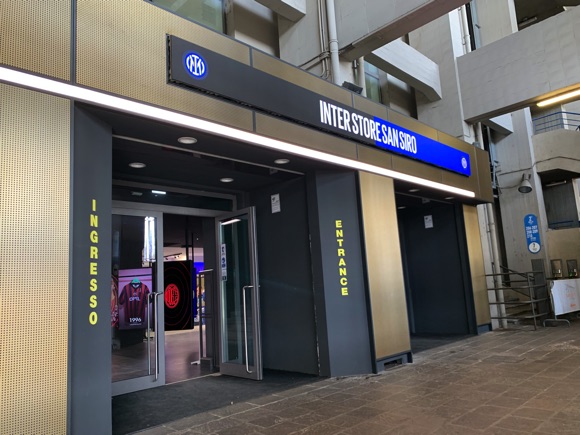






The club oversees two outlets. In the city centre, the InterStore Milano (daily 10am-8pm) at Galleria Passarella 2 sits next to the Milan Megastore near San Babila metro, while by Gate 14 at the stadium, there’s the InterStore San Siro (daily 10am-7pm). You’ll also find stalls set up on match days, lining the pathways between the hippodrome and the stadium.
Now featuring two stars for 20 Scudetto wins, the first-team top for 2024-25 has reverted to the classic look from the 1960s, thin stripes offset by a diagonal pattern down the left-hand side and shoulder. Away tops are equally stylish, white with a lighter blue half-fold down collar and cuffs, while third-choice goes a bit Dortmund, yellow-and-black and strange patterns down the sides.
Retro shirts include the classic thick black-and-blue stripes with V-necks from 1964 and the thinner, Misura-sponsored ones from 1990-91.


